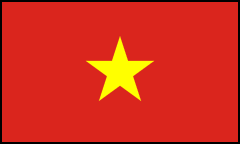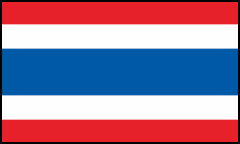All foreign investors in Vietnam must become familiar with and adhere to the country's unique foreign contractor tax (FCT) taxation system. This article serves as a brief guide for business owners to determine the appropriate FCT for their company and which payment method they should choose.
What is Foreign Contractor Tax?
One of our articles has already covered fundamental knowledge about foreign contractors and FCT in Vietnam (Feel free to take a look at it here). In short, FCT typically comprises a combination of value added tax (VAT) and corporate income tax (CIT) for foreign organizations, or personal income tax (PIT) for the income of foreign individuals.
FCT Payment Methods
A foreign contractor can pay tax in one of three ways: Declaration Method, Direct Method or the “Hybrid” Method.
The Declaration Method applies to a foreign contractor if (i) it has a permanent establishment (“PE”) in Vietnam; (ii) the contract has a term of 183 days or more from the effective date of the contract; and (iii) it adopts the Vietnam Accounting System (“VAS”), files its tax registration application with the tax authorities, and obtains a tax code.
The Direct Method applies to a foreign contractor if it fails to meet any one of the conditions above. A foreign contractor may choose to apply the Hybrid Method if it meets all three of the following conditions: (i) it has a PE in Vietnam; (ii) the contract has a term of at least 183 days from the effective date of the contract; and (iii) it maintains accounting records in accordance with the accounting regulations and guidance of the Ministry of Finance of Vietnam.
Declaration Method
The method of FCT calculation, which uses the Declaration Method and the resulting tax, are virtually the same as the method of calculation and tax paid by a Vietnamese entity registered to do business in Vietnam. The VAT it pays is the same, and the CIT it pays, which is calculated on net profit, is the same.
VAT under the Declaration Method
VAT payable is calculated and deducted under the following formula:
VAT payable = Output VAT – Creditable Input VAT
Output VAT is the total VAT that a foreign contractor collects based on the invoices it issues. More specifically, output VAT is the total VAT imposed on the goods or services that it sells. It is computed by multiplying the taxable price of the goods sold or services rendered by the foreign contractor to a Vietnamese counter-party by the applicable VAT rate. With respect to imported goods, VAT is computed on the import duty price plus import duty plus exercise tax (if applicable), and the environmental protection tax (if applicable).
Creditable Input VAT is the total VAT that a foreign contractor pays based on invoices it receives. Creditable Input VAT equals the taxable price of goods sold or services rendered by a selling party to a foreign contractor multiplied by the applicable VAT rate. For domestic purchases, input VAT is based on VAT invoices. For imported goods, input VAT is based on the VAT payment documents (which are presented to the Customs Office).
VAT rates differ depending on the types of goods sold and the services provided by the foreign contractor. There are three levels of VAT: 0%, 5% and 10%.
CIT under the Declaration Method
CIT is payable in addition to VAT, and it is determined under the following formula:
CIT payable = Assessable Income x CIT rate
Assessable Income = Taxable Income – [Tax Exempt Income + Losses Carried Forward]
Tax Exempt Income is income that is exempt from tax and that is listed as ‘tax exempt income’ in the LCIT. Tax Exempt Income is usually income from business sectors or investment activities that are encouraged, for example, income from cultivation, husbandry, or income from the performance of contracts for scientific research and technological development, or income from investment in favored geographical areas.
Loss Carried Forward is the loss an enterprise suffers after it has completed its tax finalization for any fiscal year. The losses may be carried forward to the next fiscal year and set off against taxable income in that year. Losses cannot be carried forward for more than five years.
Taxable Income means income earned from production or business activities and from other income generated from capital gains, transfer of a right to contribute capital, or transfer of a right to participate in an investment project, transfer of a concession to explore, exploit and process natural resources or real property transfer, etc.
Taxable Income is calculated under the following formula:
Taxable Income = [Turnover – Deductible Expenses] + other income
Turnover is total revenue, excluding value added tax.
Deductible Expenses are actual expenses related to production or business except for 'non-deductible expenses' as defined in the LCIT. To qualify, deductible expenses must conform with LCIT rules, payment must be made via bank transfer (in case of payment in excess of VND20,000,000), and supporting documents are required.
The standard CIT rate is 20%. The rate that applies to encouraged sectors or locations is lower. For example, companies operating in education and training, health, and environmental matters enjoy a CIT rate of only 10%.
Direct Method
In contrast to the Declaration Method, the Direct Method bases its calculation of the FCT on turnover.
When the Direct Method is employed, the law imposes an obligation on the Vietnamese counterparty to withhold the FCT. That is, before making a payment to a foreign contractor, the Vietnamese counterparty must deduct the taxes from the payment, which it then pays to the tax authorities on behalf of the foreign contractor.
VAT under the Direct Method
VAT payable = VAT Assessable Turnover x VAT rate as percentage of tax assessable income
VAT Assessable Turnover is the total turnover without deducting any taxes payable. It includes expenses paid by the Vietnamese counter-party on behalf of the foreign contractor;
VAT Assessable Turnover excludes any payment made by the foreign contractor to a Vietnamese sub-contractor or a foreign contractor who applies the Declaration Method or the Hybrid Method;
Subject to goods and services provided by the foreign contractor, the VAT rate as a percentage of tax assessable income may be 2%, 3% or 5%.
CIT under the Direct Method
CIT payable = CIT Assessable Turnover x CIT rate as a percentage of taxable turnover
CIT Assessable Turnover is the total turnover, excluding VAT, without deducting any payable taxes. The CIT Assessable Turnover includes all expenses paid by the Vietnamese counter-party on behalf of the foreign contractor, but it excludes the payment made by the foreign contractor to a Vietnamese sub-contractor or a foreign contractor that applies the Declaration Method or the Hybrid Method.
CIT rate as a percentage of taxable turnover is stipulated in Circular 103. A rate of 0.1% applies to the transfer of securities, re-insurance abroad, commission for assignment of reinsurance; the 1%-rate applies to trading, distribution, and provision of goods, materials, machines, and equipment; distribution, provision of goods, materials, machines, and equipment accompanied by services in Vietnam (inclusive of in-country import-export and imports); provision of goods under Incoterms; the 2%-rate applies to construction, installation, and financial derivative services; the 5%-rate applies to services, lease of equipment, insurance, rig lease, and loan interest; the 10%-rate applies to royalty restaurant, hotel, and casino management services, etc.
“Hybrid” Method
The Declaration and Direct Methods are not the only options available to a foreign contractor. The "Hybrid" Method allows a foreign contractor to pay CIT using the Direct Method and VAT using the Declaration Method.
Considerations for Foreign Investors
Foreign contractors that adopt the Direct Method often request the Vietnamese counterparty to pay any amounts due “net of all taxes''. In such circumstances the contract price is grossed up and the amount withheld actually becomes an expense of the Vietnamese counterparty. The mechanism involves a larger total payment of contract price and FCT. However, there is a benefit to the Vietnamese counterparty if payment is made by the withholding method and the FCT obligation is passed to the Vietnamese counterparty. That is, the VAT portion that the Vietnamese counter-party pays on behalf of the foreign contractor is the Vietnamese counter-party’s Input VAT. It may set its Input VAT off against its own Output VAT, thus effectively offsetting the VAT portion of the FCT. This effectively lowers the overall net effect of the FCT. However, by paying the net amount to the foreign contractor, the total gross amount paid by the Vietnamese counterparty will probably be more. The relative advantages and disadvantages of making a payment to the foreign contractor net of taxes should be assessed and may be apportioned.
Each method has its own advantages and disadvantages. However, the options are not open to all foreign contractors. Each foreign contractor that has a choice will have to decide which method to adopt.
According to the nature of projects and services, a foreign contractor may want to opt for an appropriate method in order to mitigate its tax liabilities. The Declaration Method and the Hybrid Method are often applied to a project if there are significant amounts of input VAT that need to be set off against output VAT and if the project may last for a long period of time.
If you still cannot decide which method is the most suitable for your business, do not hesitate to contact Viettonkin for the best consulting service in Vietnam. With a variety of high-quality services and solutions, Viettonkin is confident in becoming your most trusted companion during your venture, taking care of your time-consuming tasks and issues like FCT and more. Find out more about us here.






